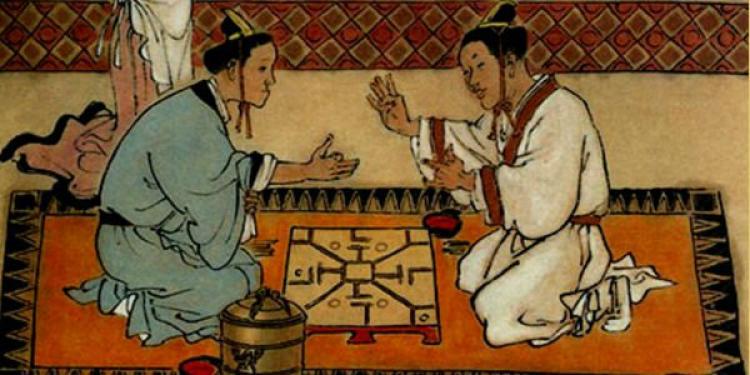Gambling in ancient and medieval China: the home of board games (Part 1)
Posted: May 2, 2017
Updated: October 4, 2017

Although China today has a rather ambiguous relation to gambling, the Chinese culture can be without doubt named the cradle of gambling. According to diverse allegations, playing games of chance, in one form or another, can be traced back to the period of the Xia (2000-1500 B.C.) and Shang (1700-1027 B.C.) dynasties. In particular, as gambling news report, the wagering of games was already popular among Chinese belonging to the higher strata of the Shang society. However, the earliest material evidence in regard of gambling games in Ancient China comes in the form of tiles which were unearthed and which anthropologists claim were used most probably in some games of chance.
Liubo which literally means "six sticks" was commonly played by two players. The most complete description of the rules of Liubo occurs in a quotation from the lost Book of Ancient Bo in a commentary by Zhang Zhan to the Book of Liezi that was written during the Jin Dynasty (265–420). According to these indications each player had six game pieces with which one was making moves on a square wooden board with inscribed symmetrical patterns. The six sticks were used in order to determine which move to be made, and had the same function as dice.
It is commonly held that the game had its origin in 1000 BC and reached its biggest popularity during the Han Dynasty. However, its playing was not always approved by authorities in the Chinese tradition. Thus Confucius was one of the people who did not approve of Liubo. According to the Kongzi Jiayu (the Family Sayings of Confucius) he stated that he would not play the game because it promoted bad habits.
The figures with which this game can be played are called "stones" and the players make moves by placing the stones on the points of a board usually having 19×19 grid of lines. The aim in this game, as online gambling sites in China note, is to conquer or “encircle” a larger total area of the board than your opponent.
We also possess evidence for the organization of an early form of lottery from about 200 BC as several artefacts similar to keno slips were discovered and dated to this period. During the Han dynasty (206 B.C.-A.D. 220), gambling for entertainment had become a habit among many top imperial officials. Chinese history books recorded the punishment of a number of Han imperial officials for over-indulging in gambling. The culture of gambling among officials grew during this period, along with gambling in the lower-class segment of the Han society. The variety of games further expanded.
• Earliest records on gambling games are found in China
• The members of the high society in each dynasty were the most passionate gamblers
• Liubo is the oldest board game know in China
Board games played in Ancient China
Some of the earliest written sources in the Chinese tradition point out to the playing of board games as a regular pastime in Ancient China. Among the games that are most frequently mentioned to be played two, as online gambling sites in EU mention, have special importance: Liubo and Go.Liubo which literally means "six sticks" was commonly played by two players. The most complete description of the rules of Liubo occurs in a quotation from the lost Book of Ancient Bo in a commentary by Zhang Zhan to the Book of Liezi that was written during the Jin Dynasty (265–420). According to these indications each player had six game pieces with which one was making moves on a square wooden board with inscribed symmetrical patterns. The six sticks were used in order to determine which move to be made, and had the same function as dice.
It is commonly held that the game had its origin in 1000 BC and reached its biggest popularity during the Han Dynasty. However, its playing was not always approved by authorities in the Chinese tradition. Thus Confucius was one of the people who did not approve of Liubo. According to the Kongzi Jiayu (the Family Sayings of Confucius) he stated that he would not play the game because it promoted bad habits.
The Go game: more than just a board game in Ancient China
Go which literally means the "encircling game" was another board game popular in Ancient China whose modifications survived in some form or another until today. Similar to the board games in Ancient Greece, Rome and Egypt the aim in this strategic board game was to surround more figures of the opponent. The game was invented in ancient China more than 2,500 years ago, and is therefore believed to be the oldest board game continuously played today. The earliest written reference to the game is generally recognized as the historical Annal Zuo Zhuan, around 4 BC. However, the modern version of this game was created in Japan in the 15th century CE.The figures with which this game can be played are called "stones" and the players make moves by placing the stones on the points of a board usually having 19×19 grid of lines. The aim in this game, as online gambling sites in China note, is to conquer or “encircle” a larger total area of the board than your opponent.
Related content
Subscribe
0 Comments












